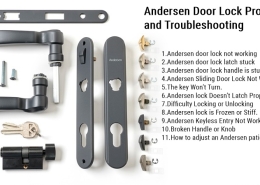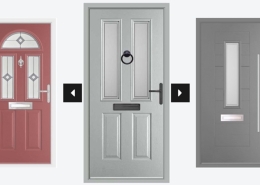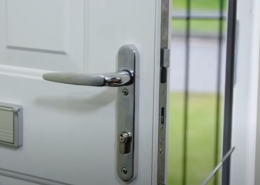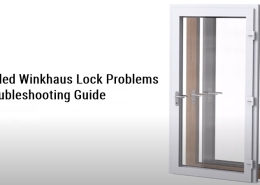Detailed Composite Door Problems and Troubleshooting Guide
Discover common composite door problems and their solutions. Learn how to address issues that may arise to keep your composite door functioning optimally.
Composite doors have become increasingly popular over the years due to their durability, energy efficiency, and low maintenance requirements.
However, composite doors can also experience problems like any other type. This article will delve into the most common composite door issues, their causes, and how to effectively address them, ensuring your door remains in great condition for years.
The composite door is not closing properly.
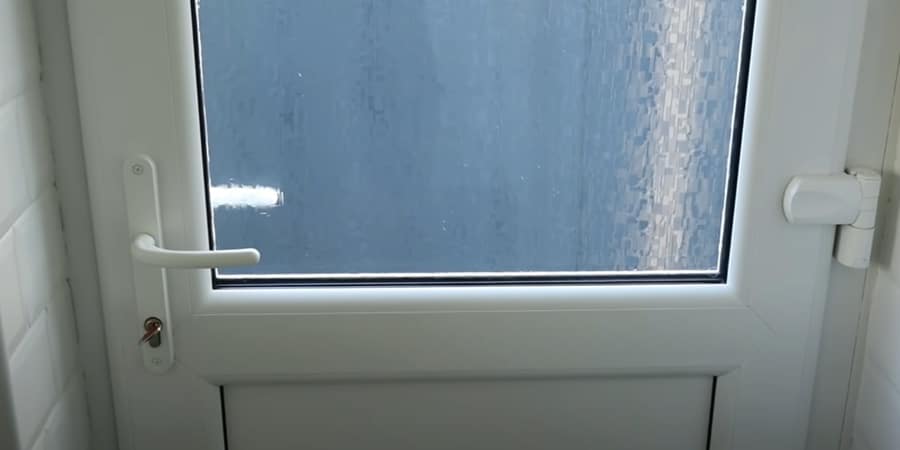
When your composite door does not close properly, it is usually because one or more of the following problems are present:
- Check the frame and door. The frame should fit snugly against the opening, with no gaps between it and the door. If there are gaps, this can cause an ill-fitting door not to close properly.
- Check for debris; look at both sides of your composite door. If there’s a lot of dust buildup or debris on one side but not on another (or none at all), your problem may be caused by insects getting into your home through cracks in the woodwork around your windows or doors.
- Check the frame for damage or wear. If you have a large opening like an entryway, check to ensure there aren’t any cracks in the wall around where the lock sets into place. This could cause your lock to pop out when you close your door.
- Ensure all hinges are intact and secure on both sides of each joint (top and bottom). Also, look for missing screws and worn-out felt pads on each hinge joint so they don’t squeak when opening or closing your door often over time!
- Check alignment between frames by measuring from the outer edge against the centerline mark on each side. If not perfect, adjust accordingly using shims underneath before reattaching panel sections together using the screws provided.
- The frame is not flush with the wall. The gap between the frame and the wall should be less than 3mm (0.12 inches). If there is a gap, this must be filled in with filler before proceeding with any other work on your composite door installation.
Composite door catching on the frame.
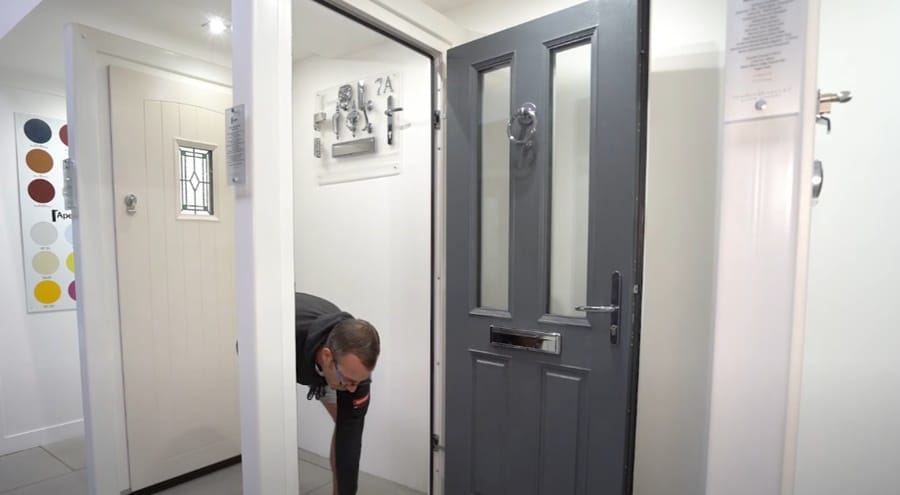
If your composite door is catching on the frame, the bottom hinge has likely been set too high. This can often be fixed by adjusting the height of this hinge to sit lower in its housing.
- Check that the hinge pins are not loose. The hinges should be tight and not move when you push them with your hand. If they are loose, this could be the cause of your problem. Depending on their condition and whether they’re still usable after being tightened up again, you may need to tighten or replace them.
- Check that the screws holding your door in place are also secure; if these come loose, this may create an issue with catching on frames/jambs around windows, etc., which would cause many problems – especially if they start falling out completely!
- If this does not work, check if any other obstructions, such as dirt or debris, may be causing your door to catch on its track. You may need to clean these off before trying again.
- If everything looks clear and still no luck, try loosening all screws holding each hinge in place before tightening them back up again (do not over-tighten).
To know more about how to adjust door hinges to fix the composite door catching on the frame problem, check the following video:
How to adjust composite entrance door hinges?
Composite door slams lock problems.
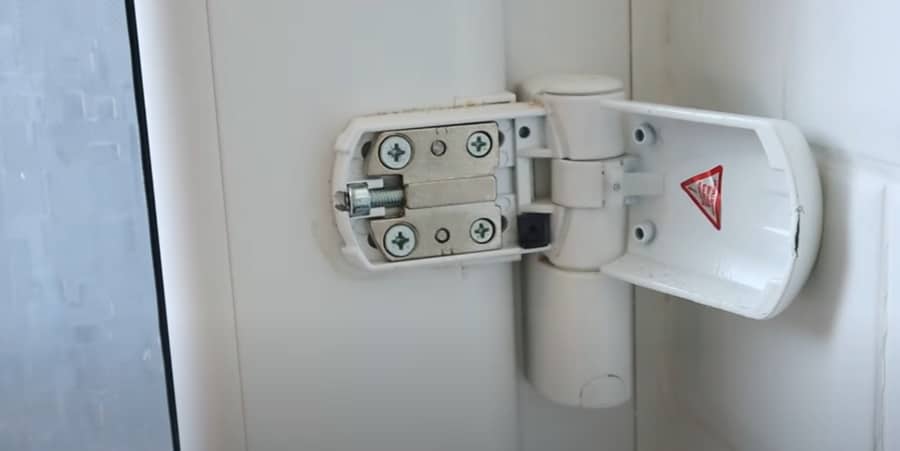
Slam locks are often made of aluminum and other metals, which require regular oiling to prevent them from becoming stiff. This may also cause the latch mechanism for your door not to align correctly, resulting in an inability to close properly.
If your slam lock is stuck, it could be due to a lack of lubrication; try oiling the latch mechanism with some WD-40 or similar spray.
If this does not work, check that both sides of the slam lock are aligned correctly; if they aren’t aligned properly, adjust them by rotating one side slightly so they line up better when closed together (this should also help prevent future problems).
Composite door leaking at bottom
When a composite door leaks at the bottom, the dirt is likely blocking drainage holes and preventing water from getting out of your home. This can be caused by the following:
- The door not being level or plumb. If one side of your composite door is higher than another, it could cause water to pool around that area and behind your baseboards and walls. Make sure that any leveling screws have been tightened properly.
- Your hinge pins may need replacing if they are worn out or damaged in any way (e.g., rust). Also, check for cracks along their surfaces before installing new ones–this will prevent further damage from occurring over time!
- You haven’t installed it correctly, or there are gaps in between where two pieces join together that need to be sealed with caulk or silicon sealant (depending on what type of material your door is made out of)
If you think your door has been installed correctly but still has water leakage problems, check for any gaps between the frame and the door itself, as this will cause moisture ingress into your home through those gaps.
Also, you can check the following video to solve the composite door leaking at the bottom problem:
Front Door Leaking Bottom Corners Fixed
The composite door is not locking.
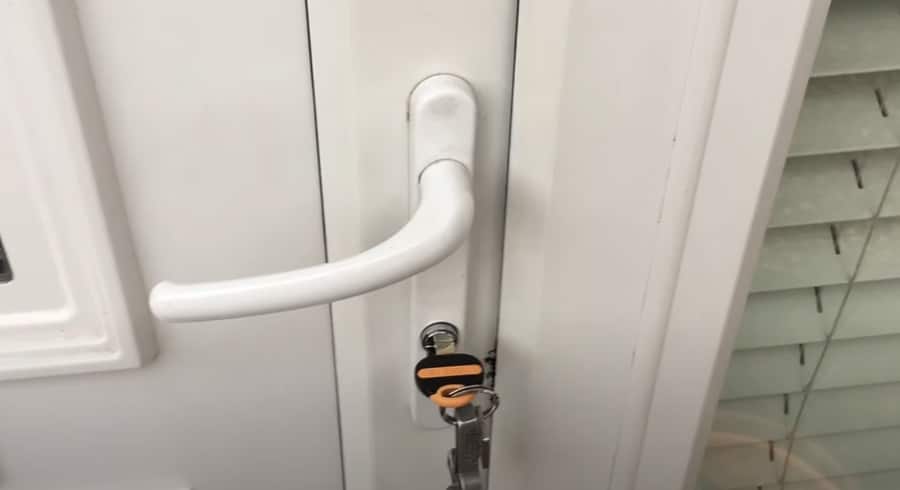
- Check the lock mechanism. The lock mechanism may be broken and need replacing if the door is not locking. If this is the case, contact a professional to have it replaced for you.
- Check The locking cylinder. The locking cylinder can also be broken if your composite door is not closing properly or has dropped hinges and won’t close completely. In this situation, you should call in professionals to repair the damage.
- Ensure there are jams in your lock; something inside has gotten stuck and prevents it from working properly as intended (locking). In most cases, this happens because someone tried using too much force when closing their composite door after opening it up.
- Check the door hinges. Another cause of a composite door that won’t close is loose or damaged hinges, causing it to drop slightly on one side or another when you try shutting it. This can be easily fixed by tightening them with an Allen key or screwdriver.
Composite door warping
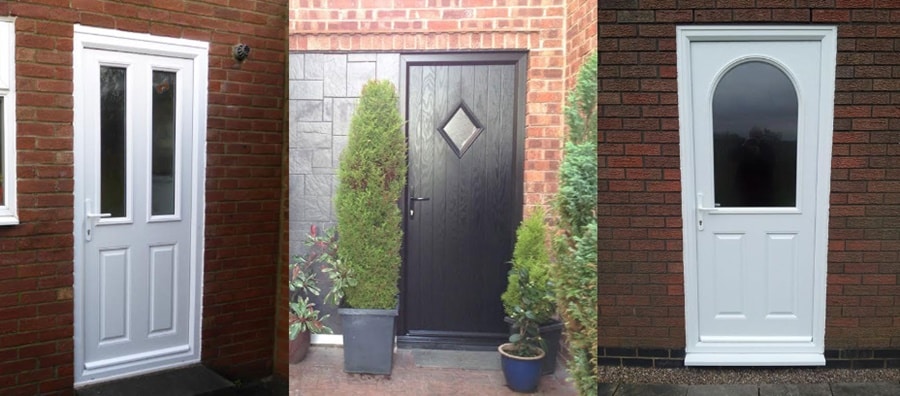
Warping is a common problem with composite doors but can be avoided with proper installation and care.
Several factors can cause warping. The most common cause of warping is humidity, which causes the wood to swell and expand. To prevent this from happening, you must install your door in an area that has good ventilation.
For more information about fixing a sticky door due to humidity, please check this article: How to Fix A Door that Sticks Due to Humidity? Details Guide.
Another cause of warping is exposure to direct sunlight; this may not seem like a big deal, but when you consider that composite doors are made up of several different materials—such as fiberglass or polyurethane resin—they’re more susceptible than regular wood doors.
Composite door draughty
If your composite door is draughty, it’s more likely that the problem is poor installation and adjustment. Here are some steps you can take:
- Use a draught excluder in the bottom of your door (it will stop cold air from coming in).
- If there are gaps around the frame, seal them with weatherstripping or silicon sealant. This will help stop drafts from getting in through cracks between panels and frames.
Composite door cracking
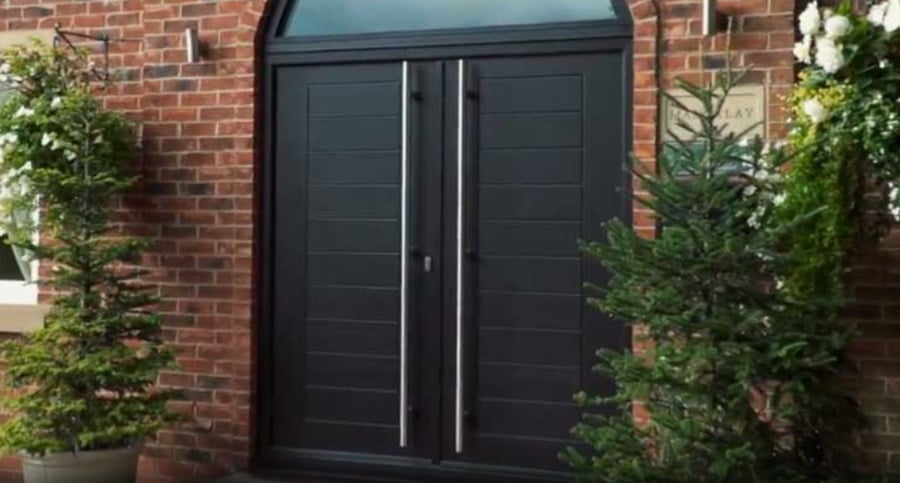
A composite door will likely be damaged if subjected to extreme weather conditions. The hot and cold temperatures of the weather can cause the composite doors to crack, which can be a real problem for homeowners looking for a long-lasting solution.
To prevent this from happening, you should:
- Ensure your composite doors are properly maintained by cleaning them regularly when necessary.
- Ensure that your new door is installed properly. The frame should be secured tightly so there is no movement from side-to-side or top-to-bottom when you open or close it; otherwise, this could cause cracking over time due to expansion and contraction from changing temperatures inside your home (or outside).
Composite door not sealing.
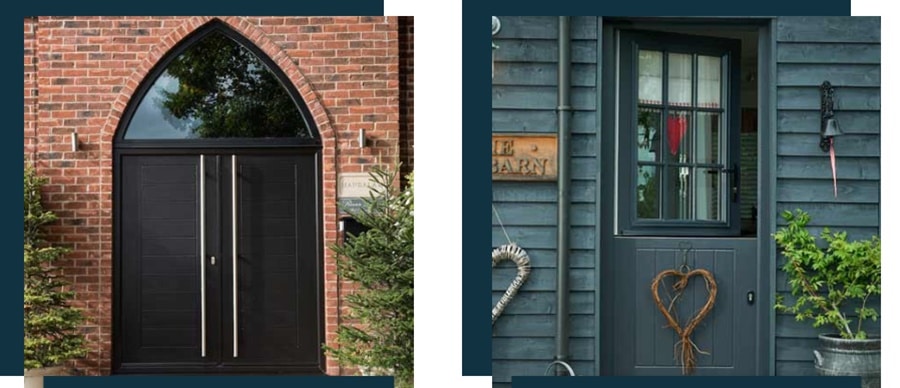
If your composite door is not sealing properly, it can cause several problems. The most obvious issue with an unsealed door is that it will allow drafts and heat to get into your home. This cannot be good in winter and summer, so saving a tight seal around your composite door frame is important.
If you suspect your composite door is not sealing properly, several things must be checked.
- Check for squareness between posts, jambs, and hinges (this includes checking if there are any gaps around windows). If gaps exist here, fill them with putty or filler before trying again.
- Make sure that the frame is square and level. If it isn’t, this can cause problems with sealing.
- Look at the edge of your door to see if it’s warped or bowed outwards–this will also affect how well a seal forms between the frame and door.
- Inspect all seals around where they meet together: at the top and bottom hinges (if applicable), along the bottom track (if applicable), and around glass panes, if any exist on either side of your opening(s). If any of these appear damaged or worn out, then replace them before proceeding further with troubleshooting efforts
Composite door swelling
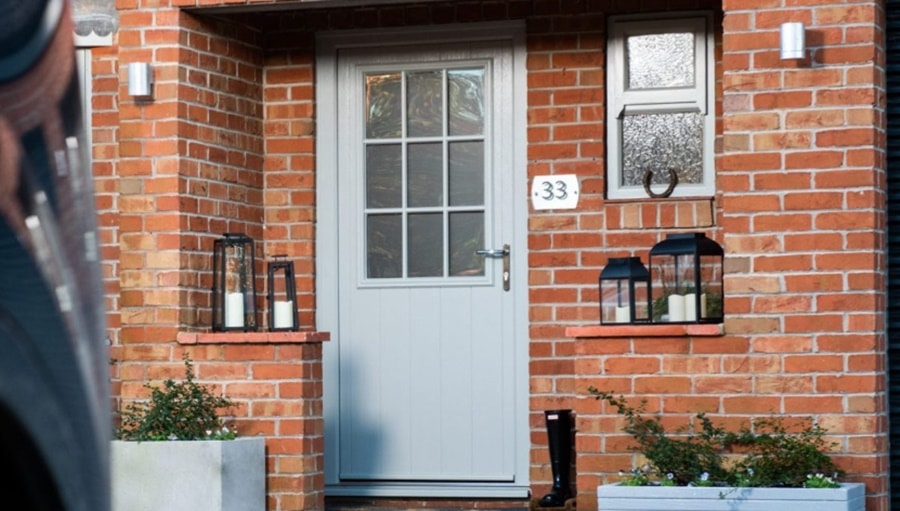
It’s important to note that this is a natural process, and it’s not necessarily something to be concerned about.
If you have a composite door that has started to swell, it could be that your door is oversized. As the sun shines on your doors, they will swell and expand. This is because composite doors are made from wood and plastic, expanding and contracting with the weather. When the weather changes (for example, if it gets colder), your door can swell or shrink in size accordingly.
To fix this problem, you will need a new door fitted by an expert in this field who can correctly measure what size replacement they need before ordering one from their supplier.
You can check the following guide video to learn how to fix a swelling or warping door:
Is it warping Swelling Doors? How to fix it?
Composite door sticky locks.
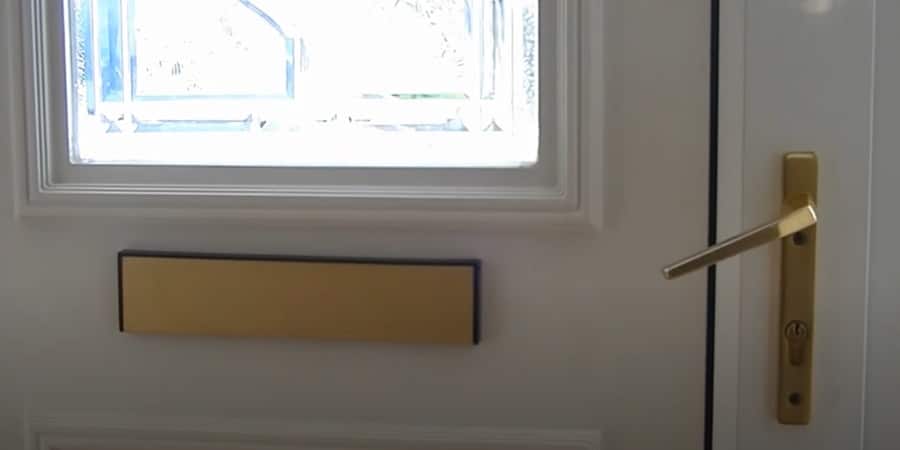
Sticky locks are a common problem with composite doors. They can happen if the locking mechanism on your door is not aligned properly or has become loose over time. When this happens, your door can stick and not open or close smoothly.
To fix this problem:
- Check if the locks are aligned properly. If they aren’t aligned correctly, it can cause problems with opening and closing doors and locking them shut tightly. To fix this issue, adjust the screws on each side of each lock until they are sitting flush with one another.
- Ensure nothing is blocking or interfering with any part of your locking mechanism before moving on to step three below, ensuring all locks are adjusted correctly and replacing any damaged ones if necessary (if this still doesn’t solve your problem).
- Spray WD-40 or oil into their locks once every month to prevent sticking composite door sticky locks over time.
Composite doors in direct sunlight swell and fading
If you have a composite door, it’s normal for them to swell in direct sunlight.
To prevent this problem and ensure that your door maintains its shape and color over time, we recommend using window film on the exterior side of your composite door. This will stop fading without affecting how well light passes through your home.
You should also avoid leaving your composite doors in direct sunlight for long periods- even if UV inhibitors are included with the product! This can lead to discoloration and fading.
Composite door locking mechanism problems.
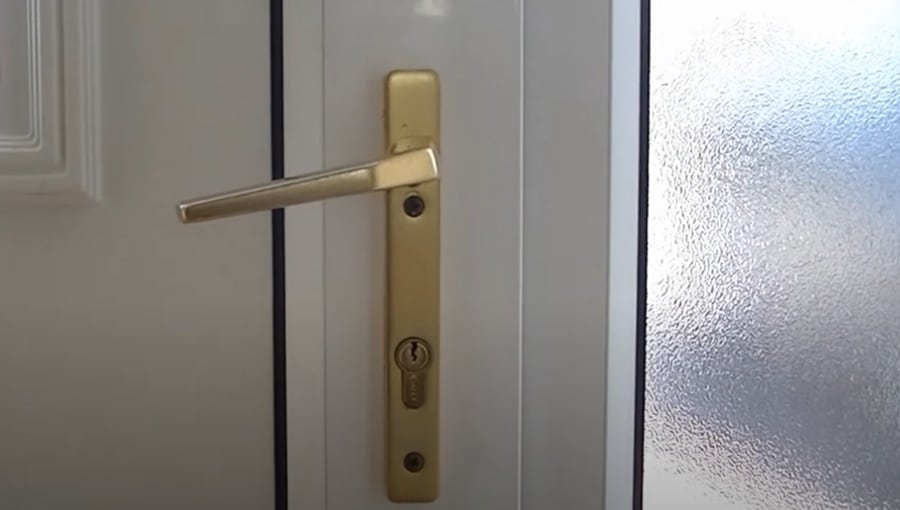
If you are experiencing problems with your composite door locking mechanism(, there is likely an issue with either the lock or its assembly. The following are some of the most common issues:
- Hard to lock: The locking mechanism may be sticking. If the door is difficult to lock and unlock, lubricate it with WD-40 or another suitable lubricant.
- Lock not opening: If your composite door doesn’t open even though it seems unlocked, the problem might be the strike plate (the part that attaches to your frame). To check this out, remove one of your locks and see if there’s any damage or corrosion on its surface–if there is, replace it!
- You can also check for broken parts inside the lock by taking apart each piece and inspecting them carefully; if necessary, order new ones from Amazon Prime or wherever else sells replacement parts for doors like yours.
- Lock not closing: Sometimes, a faulty latch will cause this issue, where doors won’t automatically close after being opened manually. But sometimes, they’ll stick halfway through their journey between open/closed positions instead of fully engaging either side before moving on down into place again.
- Lock not engaging/unlocking – If you have trouble engaging or unlocking your composite door lockset, ensure you use the right key. If this doesn’t solve your problem, try lubricating the keyhole with WD-40 or a similar lubricant and see if that helps. If not, it may be time to replace the cylinder and striker plate inside your door frame.
- Lock not disengaging – If you can’t release an engaged deadbolt on your composite entryway by turning its knob or lever, there’s probably something wrong with its internal components or wiring connections.
Generally speaking, composite doors use a multipoint locking system, so if you have more questions about multipoint locking systems for composite doors, please check this article: Multipoint Door Lock Problems and Troubleshooting Guide.
Conclusion
Composite doors offer numerous advantages, such as improved security, energy efficiency, and low maintenance. While they occasionally encounter problems such as warping, discoloration, or hardware issues, understanding the causes and taking appropriate preventative measures can help keep your door in optimal condition.


